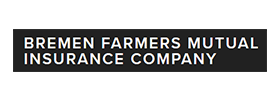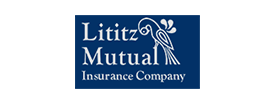A ZIP Code is essentially a system of “zone” codes, traditionally used by the USPS (or United States Postal Service). The system was used to designate delivery points in the U.S. but has also been used in the insurance industry to help in pricing auto insurance premiums.
However, there is much debate over whether using ZIP codes is fair to drivers, especially those with otherwise clean driving records, and few to no claims, but who live in areas where their ZIP code has been associated with a higher risk of claims. Those drivers, who may never have been in an accident, could face higher rates simply due to where they live. In this blog post, we’ll examine how ZIP code influence car insurance rates and which states use ZIP codes to price auto insurance policies.
Why Do Insurers Use ZIP Codes as a Rating Factor?
When determining rates for drivers, car insurance underwriters will evaluate many factors. In most states, one of those factors—and perhaps one of the most influential ones—is ZIP code. ZIP codes have been implemented in the U.S. ever since their launching in 1963, and insurers have used these codes to gauge risks related to proximity, including population density, crime rates, and accident likelihood.
If you live in an area with a designated postal code that is associated with a high accident rate, you could end up facing higher rates because of the statistical probability of loss, even if you’re a great driver. Not every state uses ZIP codes as an insurance rating factor, however.
How ZIP Codes Affect Car Insurance Rates
ZIP codes can shed light on specific high-risk factors, which include:
- Vandalism
- Crime rates
- Population density
- Natural weather events
- Accident rates
- Auto theft
- Road conditions
As these factors can vary from ZIP code to ZIP code, it makes sense why auto insurers would look at ZIP code to assess risk level in a certain area. ZIP codes are only one factor for how insurance rates are determined; they’re included amongst a much larger list, like driver age, driving record, number of miles driven, credit score (not all states), and so on.
Which States Don’t Use ZIP Code?
Currently, the only two states that have banned the usage of ZIP codes for auto insurance ratings are California and Michigan. In all other states, it’s legal for insurers to use ZIP codes as a rating factor for auto insurance to assess risk.
In states where it is legal to use ZIP code, some policyholders may be tempted to lie about their location to receive lower insurance rates. Doing so will constitute as an act of insurance fraud, which is illegal and can result in severe penalties, including but not limited to the cancellation of your policy. The bottom line? It’s better to be upfront and honest with your insurer.
Which ZIP Codes Have the Cheapest Auto Insurance Rates?
Currently (as of data from 2023) the ZIP code which has the cheapest car insurance rates is located in Charlotte, North Carolina, featuring an average quote (for liability only) of less than $50/month. Other states with affordable ZIP codes include Vermont, Arizona, Ohio, and North Carolina. The postal codes in these states are located in regions with lower population density, and therefore the drivers living in those areas are less likely to be involved in collisions.
Why Isn’t Using ZIP Codes as an Auto Insurance Rating Factor a Good Thing?
Well, it depends. If you’re a driver living in an area with rates that are lower due to a minimal accident rate, low crime, and low incidence of natural disasters, your ZIP code rating may be beneficial. However, if you live in an area with a ZIP code that is associated with high accident rates, high theft, and more, your rates may be higher – even if you were a good driver, and you could end up penalized despite being a responsible driver solely based on your geographical location.
ZIP codes are a convenient way for insurers to assess location-based risks, but they can end up oversimplifying the otherwise complex dynamics that exist in a neighborhood. Using a ZIP code approach may result in a disparity in premiums, overlooking individual circumstances in favour of looking at underwriting from a more “statistic” based approach.
While ZIP codes have only been banned in two states so far, there’s are talks about the banning of ZIP codes as an insurance rating factor altogether. The argument for this is that ZIP codes (and credit scores – although that’s a conversation for another day) tend to disproportionately target lower income communities and, incidentally, a higher rate of minorities living in a specific ZIP code. However, this varies all over the country. The consensus is ultimately that, as ZIP code can overlook responsible driving behaviour in favour of a statistic-based, “catch-all” approach, it can unfairly assign higher rates to what insurance companies would otherwise view as “good drivers.”
































